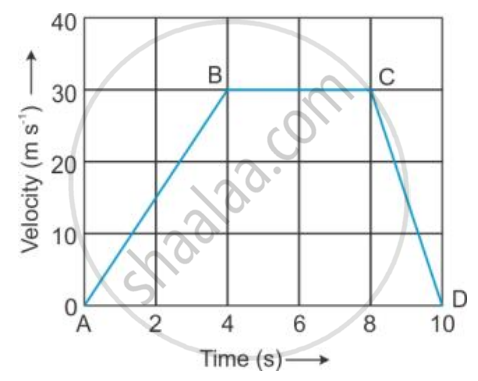Advertisements
Advertisements
प्रश्न
A car accelerates at a rate of 5 m s-2. Find the increase in its velocity in 2 s.
उत्तर
Acceleration = Increase in velocity/time taken
Therefore, increase in velocity = Acceleration × time taken
= (5 × 2) m/s
= 10 m/s
APPEARS IN
संबंधित प्रश्न
Name the physical quantity obtained by dividing ‘Distance travelled’ by ‘Time taken’ to travel that distance.
A car is moving along a straight road at a steady speed. It travels 150 m in 5 seconds:
How far does it travel in 1 second ?
A car is moving along a straight road at a steady speed. It travels 150 m in 5 seconds:
How long does it take to travel 240 m ?
A ball hits a wall horizontally at 6.0 m s-1. It rebounds horizontally at 4.4 m s-1. The ball is in contact with the wall for 0.040 s. What is the acceleration of the ball ?
The graph given alongside shows how the speed of a car changes with time:

(i) What is the initial speed of the car ?
(ii) What is the maximum speed attained by the car ?
(iii) Which part of the graph shows zero acceleration ?
(iv) Which part of the graph shows varying retardation ?
(v) Find the distance travelled in first 8 hours.
When is a body said to be in motion?
Draw the shape of the velocity-time graph for a body moving with (a) Uniform velocity and (b) Uniform acceleration.
The velocity-time graph of a moving body is given below in Figure

Displacement in each part AB, BC and CD.
What is the relation between distance and time when the body is moving with uniform velocity?
